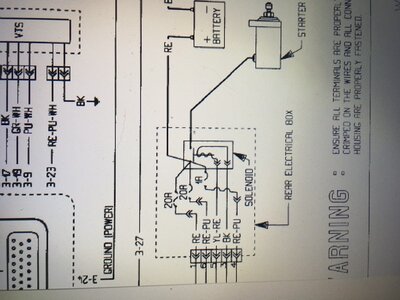Hello, I was starting to winterize my seadoo’s today, when I went to start the 99 GSX RFI here was nothing, no beeps nothing, so I was worried. Put another battery in and it was good. I had been having some issues with it and low battery, so I tested the voltage while cranking and it went down to about 7 ish volts. So I went and bought an Interstate battery, same model as another Interatate that I’ve had since about 2016. Great battery. I had bought this new Interatate for the last ride of the year which was around October 3rd or so. After I took this new Interatate battery out of it I checked volts and it was at 1.7 volts. Do you guys think this machine is killing batteries somehow while it’s sitting? Or did I just happen to get a bad battery? Should I try and put a charge on it or just take it back? I just don’t want to procrastinate and then forget about it and have the 1 year warranty expire. Thanks for any input people, really appreciate the people helping on this forum.
-
This site contains eBay affiliate links for which Sea-Doo Forum may be compensated.
You are using an out of date browser. It may not display this or other websites correctly.
You should upgrade or use an alternative browser.
You should upgrade or use an alternative browser.
Dead battery 99 GSX RFI
- Thread starter burtshaver2021
- Start date
- Status
- Not open for further replies.
artr
Well-Known Member
If your newer Interstate battery has a warranty of 100% for the first year I would charge it up, have it load tested and try to keep it charged over the winter and see if it is usable until late summer next year. Then replace under warranty next year if it does not preform before warranty expires to maximize the warranty replacement on the new battery. If you do not ride during the winter months then why replace it now.
That makes good sense, I will see if it will take a charge and take it in to be load tested. I bought it from Jim’s performance who used to be a BRP dealership. They said they use this battery in all there snowmobiles and seadoo’s so I’m going to use it during the winter in one of my snowmobiles. I’m really hoping this battery is defective though, otherwise if it’s not then what could cause it to go down to 1.7 volts in 17 days?If your newer Interstate battery has a warranty of 100% for the first year I would charge it up, have it load tested and try to keep it charged over the winter and see if it is usable until late summer next year. Then replace under warranty next year if it does not preform before warranty expires to maximize the warranty replacement on the new battery. If you do not ride during the winter months then why replace it now.
artr
Well-Known Member
See how it preforms in the snowmobile if it takes a charge and load tests ok. If you have a voltmeter that is also an ammeter you could put that in series with your battery back in the jetski and see if there is excessive current draw while it is just sitting (more than a couple of mA).
This is good stuff, I’m not familiar with ammeter but I will research that. Thank youSee how it preforms in the snowmobile if it takes a charge and load tests ok. If you have a voltmeter that is also an ammeter you could put that in series with your battery back in the jetski and see if there is excessive current draw while it is just sitting (more than a couple of mA).
I’m an infant when it comes to electrical things, especially DC so my apologies for the basics questions. From what I’m reading in the multimeter manual the meter should be set up as in the last picture I posted? So I need to hook this up in series? I don’t know how to do that, would you mind explaining where I put the leads? Both on the positive battery cable?
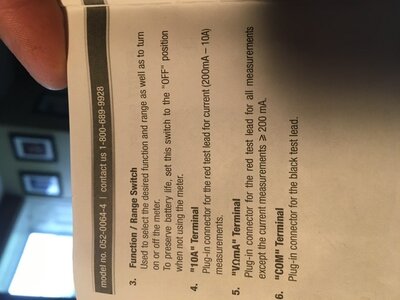
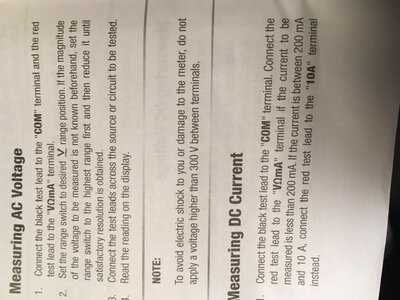
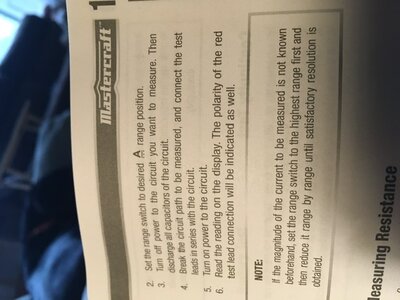
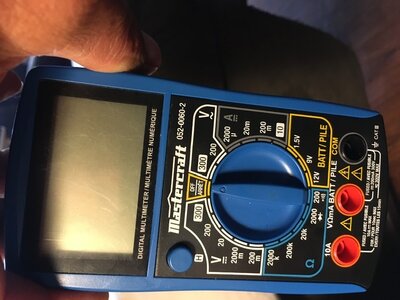
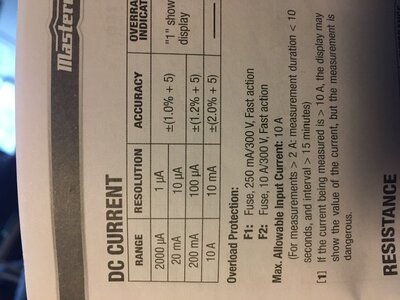
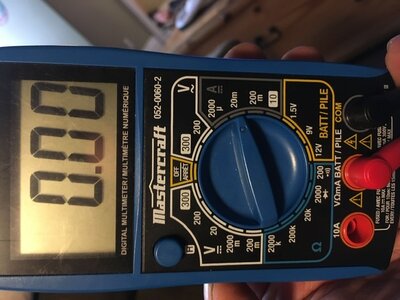






I have been doing a lot of searching tonight, came across an old thread where @POPPS mentiomed running the leads in series on the negative wire to the battery, if there’s a current, start pulling fuses until the current stops. I will try those search terms and see what else I can find. I just wasn’t sure where to put the ammeter in, the positive or the negative.Google parasitic draw test
Thank you, that search yielded some good results. I see AGAIN to simply remove the negative cable from the battery and use the micrometer between the post and cable on Amperes setting, Any advice on what setting to start on, I’ve read to start on a setting that is higher than what you expect the reading to be, should I start on 10amp? Which is the highest setting this multimeter hasGoogle parasitic draw test
Thank you,, i will just go ahead with the multimeter, it’s a pretty inexpensive anyways. In one of the video’s I watched once he determined that there was a draw, instead of pulling the fuses to find from where, he tested for voltage drop across the fuse? I don’t know, one small step at a time for me. I will check to see if there’s a draw and go from there.I would start at the highest for the safety of the meter. You can do this test old school with a test light, not as accurate, but some place to start. If the test light glows there is a draw
artr
Well-Known Member
The ammeter measurement will give you the total current draw without any conversions. I have never had the need to do this test but my guess would be a few mA or less for standby current in the MPEM would be normal. If you get significantly more then you would want to track it down.
I started with the largest range (10A range) and got a reading of .49 Then used the 200m range and got a reading of 5.5 . I don’t know what these readings mean, I’m thinking that the reading of .49 when on the 10A range is a half of an amp which would be 490Ma and that the 5.5 reading when I was in the 200m range Is 5.5 amps which is 550 Ma but I really don’t know. I’m going to try and do some googling to see if I can figure out what these readings are
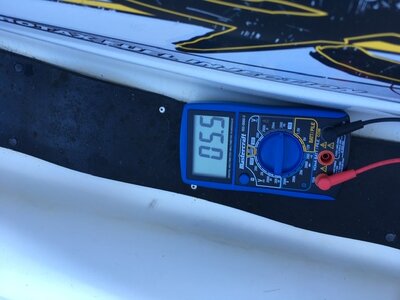
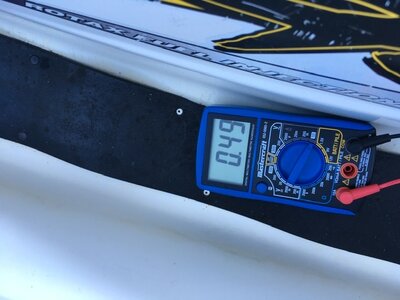


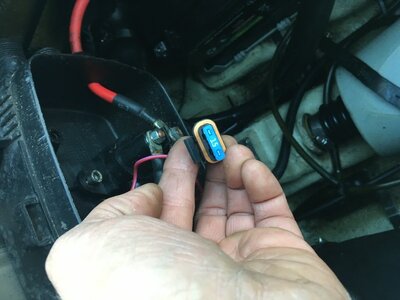 In the rear electrical box that contains the solenoid there is a 20amp, 15amp and a 1amp fuse.I tried testing across the fuses for voltage drop but couldn’t get a reading, probably not on the right settingon my multimeter but when I pulled the 15amp fuse the the drain disappeared completely. Just going to look through the manual to see what this fuse is for?
In the rear electrical box that contains the solenoid there is a 20amp, 15amp and a 1amp fuse.I tried testing across the fuses for voltage drop but couldn’t get a reading, probably not on the right settingon my multimeter but when I pulled the 15amp fuse the the drain disappeared completely. Just going to look through the manual to see what this fuse is for?artr
Well-Known Member
you had your red test lead plugged incorrectly for the 200mA range. It should have been in the center hole of the meter. Your measurement showed 0.49A = 490mA. You should not be using the 200mA range, you might blow a fuse in the meter. That read you got is too hifh for standby current. Pull fuses, one a a time too see what section is causing that high current. Try the holder relay fuse first- it is 5A on the MPEM.
The dess key was not on the machine and there was no battery in it, when I went out to test it I only put the red cable on the battery, never put the ground cable to the battery, or put the dess key on,when you got your reading of 0.49A, it was not taken right after putting the key on the post or right after pressing the start button without the key, correct? The reading was taken with the ski just sitting inactive for a minute.
Yes, that’s what I did. Was that the correct way?did you put one lead from the meter on the black battery ground cable and the other meter test lead on the battery negative to get that 0.49A measurement?
Yes, I thought that too after I posted. Is that the correct way to test? I didn’t put the dess key on so I’m pretty sure the MPEM was sleepingyes. you said above you did not connect the ground cable to the battery but you actually did by connecting it through the meter.
- Status
- Not open for further replies.
Similar threads
- Replies
- 32
- Views
- 973
- Replies
- 15
- Views
- 477
- Replies
- 20
- Views
- 288
- Replies
- 0
- Views
- 85





